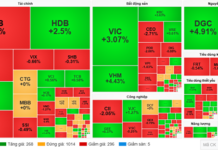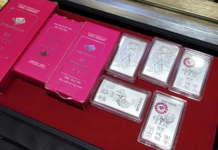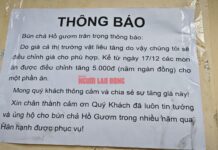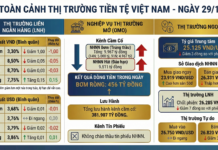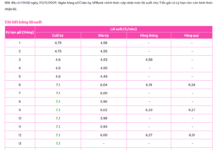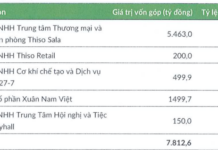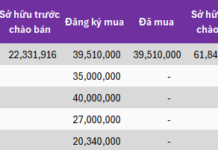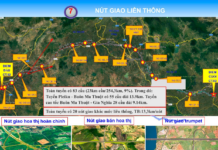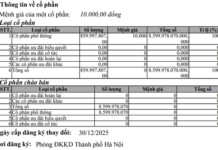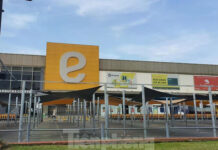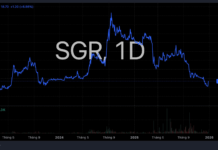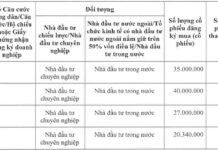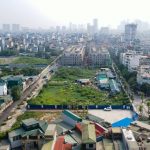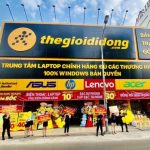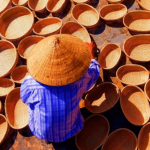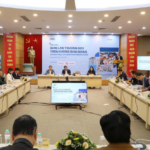International arrivals to Vietnam each year are just about one-fifth of domestic tourist numbers, but they generate 1.4 times more revenue due to their higher average spending, which is five to nine times higher. VinaCapital’s Chief Economist, Michael Kokalari, made this observation in a recent report, noting that foreign tourism has brought significant income to many local businesses, indirectly boosting the economy.
Tourists are spending more
Last year, Vietnam’s tourism industry contributed 4 percentage points to GDP growth. It is estimated that while purchases by foreign tourists account for only about 10% of retail sales in Vietnam, this factor still contributed to economic growth this year.
“We estimate the total contribution of tourism to the Vietnamese economy, including direct and indirect contributions, to be over 15% of GDP,” said Michael Kokalari. International tourism accounted for about 8% of Vietnam’s GDP pre-pandemic, compared to 12% in Thailand. Therefore, the continued recovery of Vietnam’s tourism industry in 2024 could add another 1 percentage point to the country’s GDP growth this year.
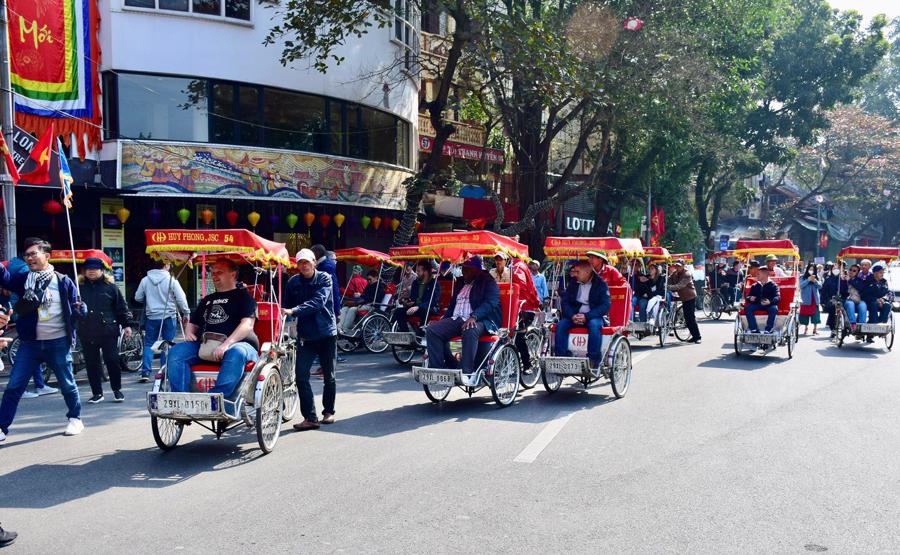
From a business perspective, Tran Phuong Linh, Director of Marketing and Information Technology at BenThanh Tourist, said that since the beginning of this year, the international tourism market for this enterprise has grown remarkably. It is estimated that the number of tourists and inbound tourism revenue of the company has increased by more than 50% compared to the same period in 2023. Both traditional and new markets of the company have seen promising growth.
Among them, Asian markets, especially India and Taiwan, are performing the best, followed by European markets. Notably, the average daily spending of tourists can range from 80 to 140 USD per day, much higher than before. “In Ho Chi Minh City, international tourists tend to opt for cultural exploration programs, visiting historical sites, enjoying artistic performances, and discovering local cuisine, especially traditional dishes and Vietnamese coffee culture,” said Linh.
At Ben Thanh Market (District 1), a must-visit destination for many Western tourists, vendors have felt the buzz during this peak season. According to the Ben Thanh Market Management Board, besides buying fruits and snacks, many tourists also purchase tea, coffee, and other items as souvenirs. Spending by international visitors accounts for about 60% of the revenue at this market.
Tourist spending is also reflected in the VAT refund figures for visitors to Vietnam. Information from the Ho Chi Minh City Customs Department reveals that, cumulatively, in the first five months of 2024, the customs authority of Ho Chi Minh City has refunded VAT to more than 7,200 foreign nationals carrying goods upon departure, with a total value of over VND 460 billion, corresponding to a VAT refund of over VND 40 billion.
“Among the group of shoppers eligible for tax refunds, those who spend the most on their trip to Vietnam are not from European countries or the US, but from India. This group of shoppers tends to buy a wide range of items and has only emerged this year,” said a representative of the Ho Chi Minh City Customs Department.

Meanwhile, analyzing the spending structure of tourists, the payment platform Payoo recorded in the first half of this year that the number of international card transactions issued abroad through the Payoo payment platform increased by 2.6 times in volume and 2.5 times in value compared to the same period last year, focusing mainly on dining and shopping. Specifically, international card spending on dining accounted for around 40%, fashion and cosmetics accounted for 14%, jewelry and watches were close to 12%, and supermarkets and convenience stores accounted for more than 10%.
Need for more products to attract tourists
It can be said that tourist spending is one of the most important indicators to measure the impact of tourism on the economy. However, changes in spending patterns also reflect tourism trends. It is not surprising that dining accounts for the majority of international tourists’ budgets, given the fame of Vietnamese cuisine, but it also indicates that Vietnamese tourism lacks products to encourage higher spending on shopping, souvenirs, and entertainment.
At a seminar on “Developing Tourism in the Digital Age” held on June 27, representatives of travel companies pointed out that Vietnam still lacks places for tourists to spend money, as evidenced by the spending structure. The amount spent by tourists is still lower than in other countries in the region, such as Thailand, Singapore, and China. There are few tourists who spend money on entertainment activities, while in countries like Malaysia and Thailand, entertainment accounts for 40% to 50%, or even 60% to 70%, of the total cost of a trip.
Many tourists have shared that they come to Vietnam mostly for sightseeing, swimming at the beach, strolling, and taking photos. There are still not enough locations and services for entertainment at tourist destinations. Some places have tried to improve the situation by opening additional facilities and offering more experiences, but they are not yet attractive enough to bring tourists back for a second visit.
In urban areas, there are still few places for night entertainment, such as bars and night amusement parks. Night markets often have a limited selection of goods, mostly snacks, and many cities go to sleep early, with streets becoming quiet around 10 pm and service establishments closing, leaving tourists with no choice but to sleep early as well.
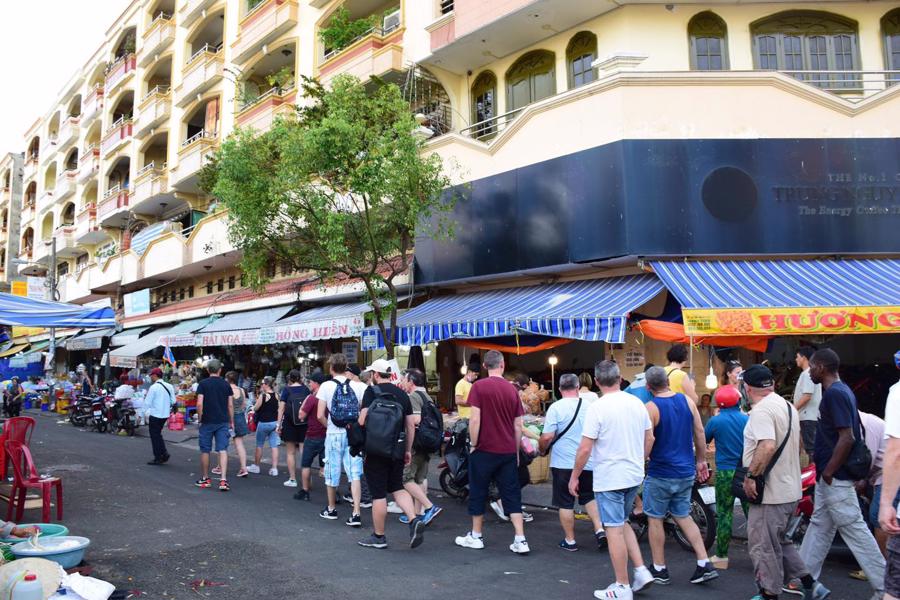
According to the Vietnam Tourism Advisory Board (TAB), localities and destinations need to expand and provide more services, such as large-scale shopping centers, and offer handcrafted products with beautiful designs that are produced according to the demands of tourists, rather than just traditional products from craft villages.
At the same time, while visa policy changes have become more relaxed in recent times, they are still not attractive enough, especially when compared to some countries in the region. Many experts have analyzed that post-pandemic, the decision to travel is often spontaneous and sudden, so destinations with more convenient entry policies will attract more visitors. This is why Vietnam needs to continue researching and adjusting its visa policies to be more flexible and attract a diverse range of high-potential markets.
Phan Ha, Chairman of Lux Group, suggested that at this time, Vietnam should focus on attracting tourists from high-spending markets such as Australia and New Zealand. Major Vietnamese airlines have direct flights to these countries, and it is currently winter there, so there is a demand for travel to sunny destinations like Vietnam. Ha believes that Vietnam should waive visa requirements for citizens of these countries and attract them with beach resorts, cultural tours, and delicious cuisine.
The most extensive bribery case ever in Thanh Hoa: Numerous suspects prosecuted for “Giving and Receiving Bribes”
The Provincial Security Investigation Agency (PSIA) of Thanh Hoa province announced on January 31st that it has made the decision to initiate a prosecution against 23 individuals in connection with the offenses of “Accepting bribes” and “Giving bribes” as stipulated in Article 354(3) and Article 364(2) of the Criminal Code.
Accelerating disbursement of the 120 trillion VND credit package for social housing
Deputy Prime Minister Trần Hồng Hà has recently issued directives regarding the implementation of the 120,000 billion VND credit package for investors and buyers of social housing, workers’ housing, and projects for the renovation and construction of apartment buildings.
Vietnam’s Irresistible ‘Specialty’ That China Desperately Wants to Revive: Highly Popular from the US to Asia, Bringing in Millions of Dollars
Vietnam is one of the largest exporting countries in the world, along with China and the Philippines.


